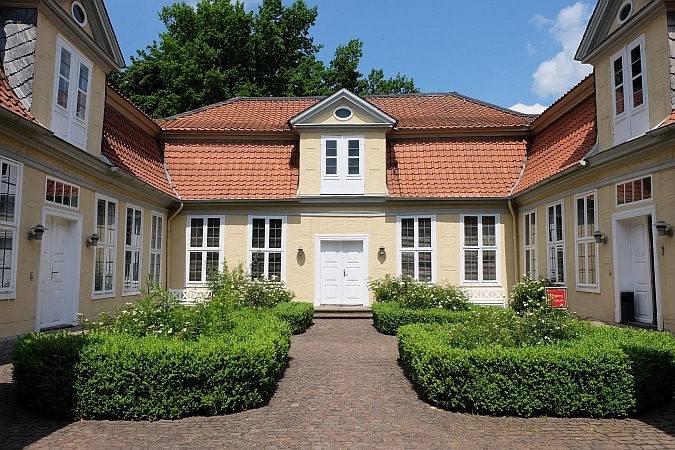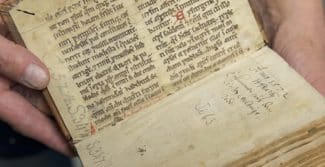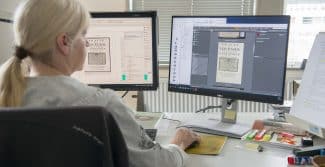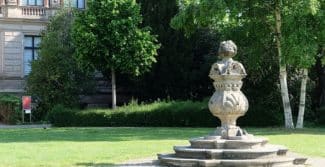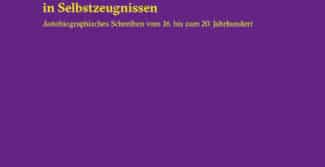Lessing in Wolfenbüttel
Lessing was sworn in as the librarian in Wolfenbüttel on 7 May 1770. He initially moved into rooms belonging to the crown prince in Wolfenbüttel’s palace, which had stood empty since the middle of the century when the duke and his court had moved to Brunswick. It was here that he completed the play Emilia Galotti, which was premiered in Brunswick in 1772. From 1773 onwards Lessing published his own periodical entitled Zur Geschichte und Literatur: Aus den Schätzen der Herzoglichen Bibliothek Wolfenbüttel (History and literature: The treasures of the ducal library in Wolfenbüttel).
In 1775 he travelled to Italy via Berlin, Leipzig, Dresden and Vienna. Upon his return he was named a privy councillor and was finally in a position to marry Eva König, whom he had met in Hamburg in 1767. The couple then moved to the Meissnerhaus (at Schlossplatz 2) in October 1776.
The house, next to the rotunda of the library, was renovated for Lessing. He moved in with his pregnant wife shortly before Christmas 1777. Their son was born on Christmas Eve but died soon afterwards, followed by Eva Lessing on 10 January 1778. From then on Lessing worked in the room where his wife had passed away. After he had been forced to settle his dispute with the Hamburg head pastor Johann Melchior Goeze over the ‘Wolfenbüttel Fragments’, he began work on his drama Nathan der Weise (which was premiered in Berlin in 1783). Lessing died on 15 February 1781 in Brunswick, where he had spent much of his time and had his own apartment.
History of the Lessinghaus
Soon after Karl I, Herzog von Braunschweig-Wolfenbüttel, acceded to power, he commissioned the construction of a house next to the library building which would function as servants’ quarters; this was given to his chief valet, Schäffer, in 1740. After Schäffer’s death the three-wing house was inhabited by his son-in-law Grasshof, who was secretary to the court. He moved out on 1 July 1777, and the house was renovated for Lessing at a cost of over 1,000 thalers. The dramatist lived there from the winter of 1777 until his death in 1781.
The house subsequently served as a residence for Lessing’s successors as librarian until 1884, when the then holder of the position, Otto von Heinemann, vacated the premises due to its dilapidated condition. By that time the new library building and a new house for the director had been built on Lessingstrasse. In August 1887 the library rotunda was demolished after construction had been completed on the new library. Although the Lessinghaus had originally been scheduled to suffer the same fate, this did not in fact happen.
In 1890, the waterways authority moved into the building, followed by the municipal building authority. In 1929, three rooms in the north wing were furnished as a memorial to Lessing, and these were renovated in 1958. Ownership of the Lessinghaus only returned to the Herzog August Bibliothek in 1968. In 1978 it was opened as a museum, with two guest apartments in the west wing reserved for scholars. A completely revised exhibition based on a new concept has been on show since 2004.
